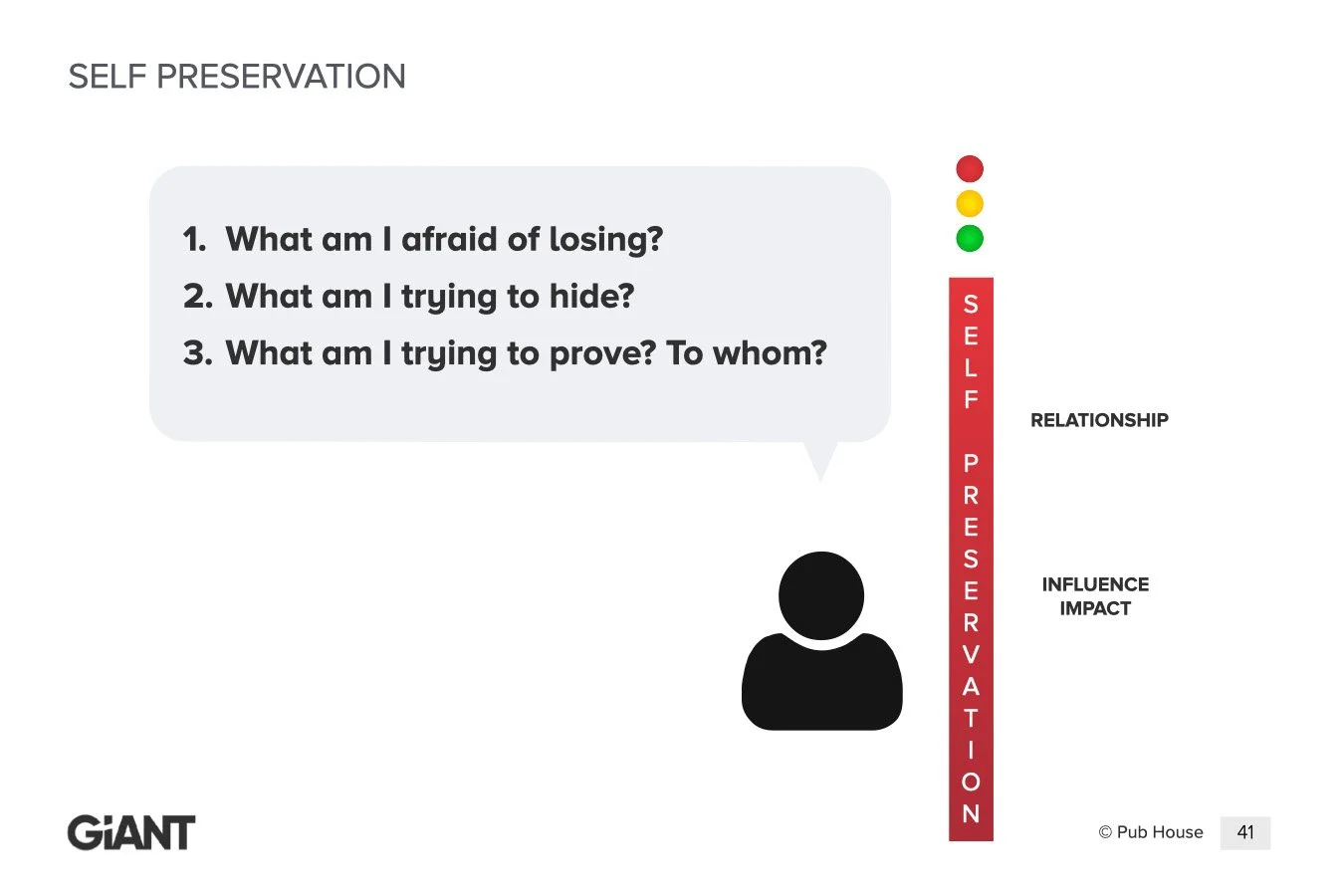Are You Holding the Ball Too Long?
Welcome to another Toolkit Tuesday! Every week, our goal is to give you a practical leadership tool to put in your toolkit. This week, we’re looking at how self-preservation can limit your team—and what to do about it.
The Challenge
(Steve) So there I was… playing basketball on the hangar deck of a Navy ship, somewhere in the middle of the ocean. We went hard, but not too hard—because falling on non-skid deck plating would tear up your hands. And nobody wants to catch a basketball covered in blood.
Out at sea, those games were a release from stress, but they also reminded me of a leadership truth I didn’t fully understand at the time: you can’t tell your team to take shots if you won’t pass the ball.
That’s the reality many leaders face today. They say they want collaboration, ownership, and initiative—but they’re afraid to let go of control. That fear shows up as bottlenecked decisions, micromanaging, or unclear direction. And the team? They either shut down or start playing it safe.
John Chu, director of Wicked, said it best:
“If you want a collaborative team, you have to be emotionally healthy enough to let others play with your toys.”
The Tool: Self-Preservation
The Self-Preservation Tool helps leaders confront the invisible barriers they create in an effort to protect themselves. These barriers often show up as control, hesitation, micromanagement, or avoidance—and they keep the leader from fully empowering their team.
To identify when self-preservation is at play, ask yourself three questions:
What am I afraid to lose? (Control, credibility, status, or influence?
What am I trying to hide? (Insecurity, a lack of clarity, or past mistakes?)
What am I trying to prove—and to whom? (That I’m capable, important, irreplaceable?)
Let’s take that last question. One leader I worked with insisted on being involved in every single decision—even minor ones. Why? He wanted to prove he was still the most capable leader in the room. But instead of earning more respect, he became a bottleneck. His team stalled out, waiting for approval instead of growing in ownership.
These three questions cut through the noise and expose the deeper issue: fear. Once you name it, you can address it—and lead from a place of health instead of self-protection.
Why This Matters Now
If you don’t name your self-preservation tendencies, they’ll quietly limit your team. Your top people will stop offering ideas. Collaboration will fade. And execution will slow down—because your team’s just waiting for you to let go of the ball.
Over time, you risk losing momentum and motivation across the board. The very things you want from your team—ownership, creativity, initiative—won’t happen if you’re unwilling to share control.
The Result
On the other hand, when you lead from a place of security and trust, something powerful happens: your team steps up. They feel empowered to contribute, take initiative, and collaborate. And you become the kind of leader people want to follow—not because you have all the answers, but because you invite others to bring their best.
Take Action
Here’s how to grow your leadership this week:
Name one area where you’re holding on too tightly. Ask yourself the three self-preservation questions—and be honest about what’s driving your behavior.
Ready to move from control to collaboration? Let’s talk about how you can lead with confidence and build a team that thrives.
Closing the Loop
Looking back, the best basketball players I played with weren’t the ones who shot the most—they were the ones who moved the ball, trusted the team, and made everyone better. The same is true in leadership. You can’t win if you’re not willing to pass.


